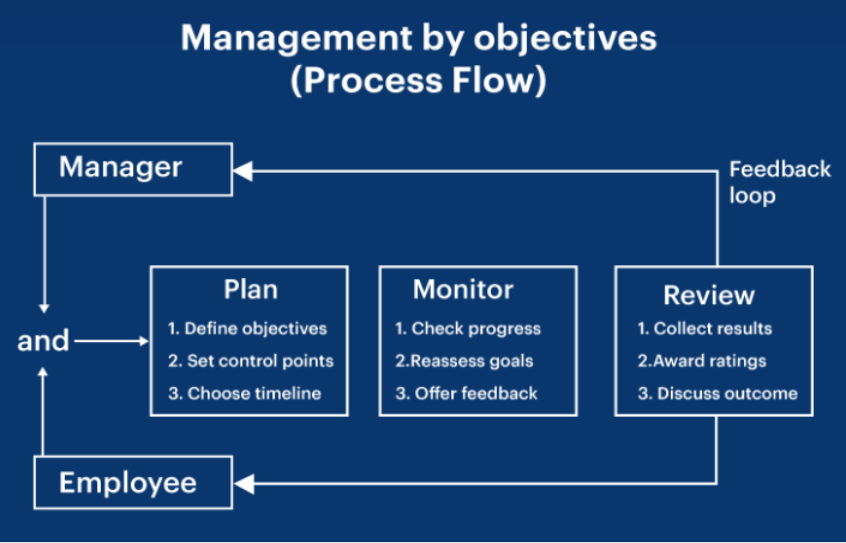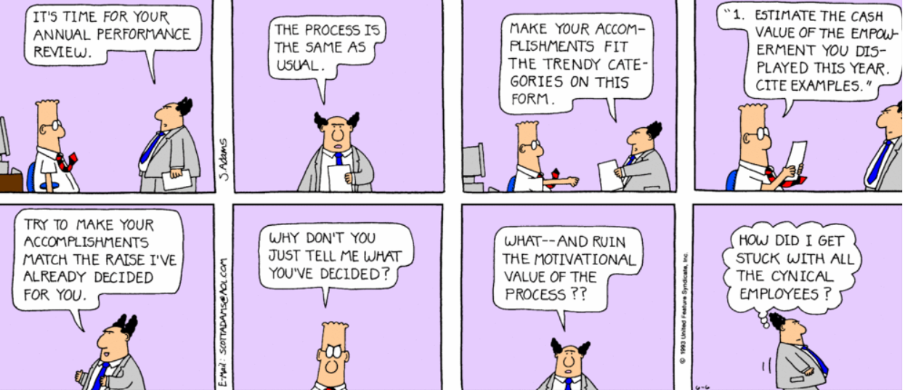Work Related Concerns
Understanding Performance Appraisal in the Indian Workplace

.png)
Written by
Aarohi Parakh,
Psychologist and Content Writer

Reviewed by
Sanjana Sivaram,
Psychologist and Clinical Content Head

What is a Performance Appraisal?
A performance appraisal is a structured evaluation of an employee’s job performance over a defined period, often tied to goals, behaviours and results. In practise, it is also referred to as a performance review, performance evaluation or employee appraisal.
Human Resources (HR) is typically responsible for outlining the performance appraisal process, which managers then execute. Its core purpose is to help organisations and employees answer key questions: What has the employee achieved? Where are the gaps? What next steps should be taken – in terms of development, rewards or improvement?
It is a formal platform for providing job performance feedback and for distributing raises and bonuses among employees. From a managerial perspective, it should not be a moment in time – it should be part of continuous dialogue, not just an annual event.
Performance Appraisals in the Indian Context
In many Indian organisations, performance appraisals remain a cornerstone of talent management. While the underlying purpose is to evaluate and enhance employee performance, the process may often reflect traditional organisational dynamics and hierarchies.
Common Practices:
In India, appraisal practices often follow these patterns:
- Annual or bi-annual review cycles dominate; frequent or continuous feedback is less widespread.
- The appraisal is often manager-driven, where supervisors assess subordinates’ performance against pre-set goals. Although some progressive companies are beginning to adopt 360-degree or peer feedback models, these remain less common outside large corporations or MNCs.
- Appraisals are strongly linked to bonuses and salary increments, particularly in larger corporations or manufacturing/IT sectors.
- Many organisations still emphasise trait-based rating scales (e.g., punctuality, leadership, teamwork) more than objective Key Performance Indicators (KPIs).
Challenges in India
Indian workplaces face several challenges when implementing appraisal systems that truly support growth and engagement:
- Lack of transparency: Employees may perceive the process as opaque or biased. A study of Indian professionals found a significant positive association between perceptions of fairness in performance appraisals (distributive and informational justice) and employee engagement.
- Bias or favouritism: Manager-only reviews without calibration can lead to halo/horns effects (overall perception of an employee is heavily influenced by a single positive or negative characteristic) or leniency (provide excessively positive evaluations to most employees).
- Limited use of data/metrics: Many systems rely on subjective ratings rather than objective, measurable outputs.
- Low frequency of meaningful feedback: Waiting until the year-end delays conversations and reduces impact.
- Employee disengagement: India’s workforce engagement score of 19 % in 2025 (compared to 24% in 2024) suggests many employees feel disconnected.

Key Objectives of a Performance Appraisal
Performance reviews can be much more than just an administrative task when done well; they can be an effective tool for organisational alignment, growth, and engagement.
Align Individual Goals with Organisational Vision:
In many Indian companies — say, a mid-sized IT firm in Bengaluru — teams juggle multiple client projects. A structured appraisal ensures that an engineer’s goals not only meet delivery timelines but also support broader objectives such as innovation, client satisfaction, and cost efficiency. Linking day-to-day tasks with the company’s vision makes employees feel purposeful and invested.
Identify Learning and Development Needs:
In a Pune manufacturing unit, operators may meet production targets but struggle with new automation tech. Appraisal discussions can uncover such skill gaps early, enabling targeted training. This proactive approach boosts productivity and shows employees that the organisation values their growth.
Recognise and Reward High Performers:
Recognition carries deep emotional value in Indian workplaces. A transparent appraisal system ensures that high achievers — such as a sales executive who exceeds quarterly goals — are rewarded fairly. This builds trust and reinforces that effort and results are valued.
Provide Constructive Feedback for Growth:
In hierarchical settings, feedback can be sensitive. A well-structured appraisal offers a safe space for honest, balanced, and forward-looking dialogue. For instance, a hospitality manager can highlight both a front desk executive’s strengths and development areas, turning feedback into motivation.
Lay the Foundation for Career Progression:
Appraisals act as career checkpoints. In a Gurgaon start-up, a creative strategist’s consistent performance could open doors to leadership or cross-functional projects. Such discussions strengthen retention and signal that ambitions are recognised and supported.
💡 Manager Tip: Keep appraisals conversational and two-way. Ask as much as you tell — that’s where genuine growth begins.
Methods of Performance Appraisal
With the right performance appraisal method, organisations can enhance employee performance. Below are standard appraisal methods, many of which are used (or can be adapted) in India.
360-Degree Feedback
Feedback is gathered from the employee’s manager, peers, direct reports (if applicable), the employee's self-assessment, and sometimes customers. This multi-source view offers a holistic perspective.
Pros: Reduces single-rater bias; broader view of performance.
Cons: Requires a culture of trust and rater training; can be time-consuming and challenging to implement in hierarchically rigid Indian settings.
Rating Scale Method
Perhaps the most common in India: employees are rated on traits (e.g., punctuality, initiative, teamwork) using a 5- or 7-point numeric scale.
Pros: Simple, familiar.
Cons: Subjective in nature; can lead to central-tendency bias, i.e. most people may be rated as “average”, too harshly or too favourably; doesn’t help employees to improve unless backed by detailed feedback.
Management by Objectives (MBO)
Here, employee and manager jointly set measurable objectives (often SMART: Specific, Measurable, Achievable, Realistic/Relevant, Time-bound). Evaluation is based on whether objectives were met during a specific evaluation period.
Pros: Aligns individual goals with organisational strategy, supports clarity.
Cons: Over-emphasis on targets may neglect broader behaviours; also requires good goal-setting discipline.

Behaviourally Anchored Rating Scale (BARS)
It highlights both the qualitative and quantitative benefits of a performance appraisal process. BARS compares employee performance with specific behavioural examples, each of which is anchored to a numerical rating.
Pros: More objective, behaviour-based (less “favouritism”).
Cons: Resource-intensive in nature, i.e. takes time and effort to build; needs a clear description of behaviours for each specific job.
Self-Assessment
Employees evaluate their own performance (often combined with a manager’s assessment), which encourages reflection and ownership.
Pros: Promotes an employee development mindset.
Cons: Requires trust and skill in self-reflection; may inflate performance if not moderated.
Assessment Centres
The assessment centre method enables employees gain insight into how others perceive them, helping them understand the impact of their performance. Used typically for leadership roles; involves simulations, case-studies, role-plays and multiple assessors.
Pros: Deep insight into potential and behaviours under pressure.
Cons: Costly; less suited for a broad workforce in many Indian SMEs.

In the Indian context, a mix of methods (e.g., MBO + Rating Scale + Self-Assessment) often works best: simple enough for managers and employees to understand, yet effective at capturing both results and behaviours.
How to Conduct a Performance Appraisal Effectively
This section details a practical blueprint that Indian managers can follow:
Pre-Appraisal Preparation
- Clarify expectations from Day 1. At the start of the review period, set or revisit role expectations, goals and behaviours.
- Document performance throughout the year. Encourage managers to note achievements, concerns and observations cumulatively.
- Train managers and raters. Mainly to avoid biases and to emphasise behaviours as much as outcomes.
During the Appraisal
- Create a “two-way conversation”. While the manager leads, invite the employee to share their self-assessment, thoughts and concerns.
- Focus on outcomes and behaviours, not personalities. Statements like “You often failed to meet target X” or “Your feedback from team members shows you could improve collaboration” are better than “You are a poor communicator”.
- Link to development. Use the session to agree on training, mentoring or coaching needs.
- Be transparent about how ratings link to rewards/promotions. In India, as bonuses/increments are often tied to appraisal, clarity builds trust.
Post-Appraisal Actions
- Document next steps. Capturing the appraisal summary, agreed goals, development plan and timeline is vital.
- Set new goals. Use SMART format, and ensure alignment with broader organisational objectives.
- Schedule check-ins. Don’t wait a whole year. Quarterly or half-yearly mini-reviews help keep momentum and correct course.
- Follow-through on development commitments. If training/mentoring was promised, ensure it happens.
Modern Trends in Appraisal Systems
As Indian workplaces evolve, several modern trends are reshaping performance appraisal systems:
- Continuous feedback rather than annual or bi-annual only. Many progressive organisations encourage monthly or quarterly check-ins, making appraisal a living process rather than a point-in-time event.
- Objective frameworks such as OKRs (Objectives & Key Results) replacing or complementing traditional KPIs. This fosters agility and alignment.
- Technology-driven tools (e.g., cloud-based performance platforms, analytics dashboards like Zoho People, Keka, Darwinbox) to support fairness, track progress and reduce bias.
- Peer recognition and gamification features – for example, digital badges, peer nominations – to reinforce positive behaviour and engagement.
- AI-assisted insights – though still nascent in India, some tools use AI to highlight performance trends, raters’ bias patterns or alert to risk of disengagement (examples like factoHR, Workday, Effy AI).
Managers should begin exploring which of these trends suit their organisation’s size, culture and maturity.
Common Pitfalls in Appraisal Systems & How to Avoid Them
Many appraisal efforts falter because of predictable mistakes. Understanding these and how to avoid them makes a big difference.
- Recency effect: Only the last few weeks of performance are remembered.
Avoid by documenting throughout the year and making interim check-ins.
- Halo/Horns effect: One trait (good or bad) colours the whole rating.
Avoid by focusing separately on defined behaviours and outcomes, ensuring raters have training.
- Poor goal-setting: Vague, non-measurable, unaligned goals reduce clarity.
Avoid by using SMART goals and linking them to organisational priorities.
- One-size-fits-all templates: Using generic forms for all roles leads to irrelevance.
Avoid by tailoring appraisal forms for job families (e.g. sales, operations, service).
- Lack of documentation/follow-through: Appraisal becomes a check-box event with no impact.
Avoid by scheduling next steps, follow-ups, and tracking development commitments.
- Bias and lack of fairness: Employees lose trust if the process seems arbitrary. In India, especially, evidence shows that fairness perceptions significantly influence engagement.
By recognising these pitfalls, Indian managers can build appraisal systems that are credible, effective and trusted.

Emotional Intelligence (EI) in Performance Reviews
In the Indian workplace – with its diverse workforce and varying cultural expectations – integrating Emotional Intelligence (EI) into appraisal conversations can dramatically improve outcomes:
- Empathy while giving critical feedback: Managers should frame feedback with respect: “I’ve noticed that when deadlines shift, your team finds it hard to keep up – how can we support you better?” rather than “You’re always late with deliverables.”
- Creating psychologically safe conversations: Especially when part of an emotional well-being approach, the focus should be on growth, not blame.
- Cultural sensitivity in language and tone: In India’s hierarchical workplaces, making the conversation participatory (rather than top-down) improves acceptance.
- Encouraging self-reflection: Partnering with the employee to reflect on behaviours, not just outcomes: “What do you think helped you perform well? What could you change next time?”
Using EI in appraisals helps shift them from being dreaded events for employees into growth-oriented dialogues.
Tips for Employees (What Managers Should Communicate)
It is helpful for managers to encourage their employees to prepare and engage proactively.
Managers can communicate the following tips to their teams:

Performance Appraisal and Indian Labour Laws
Although India does not mandate performance appraisals across the board, appraisal systems often tie into other legal frameworks:
- Promotions and increments: Appraisals feed into salary structure decisions (Minimum Wages Act, pay scale revisions).
- Dismissals or demotions: Appraisals may support evidence for a Performance Improvement Plan (PIP) or termination.
- Equity and fairness: Indian law recognises that unfair evaluation can risk morale and may indirectly feed into issues such as unfair labour practices.
To strengthen both legal compliance and employee trust, managers should ensure appraisal systems are fair, consistent, and documented.
Performance Improvement Plans (PIPs): Explained
When an employee is underperforming, a Performance Improvement Plan (PIP) often follows the appraisal. Key considerations for Indian workplaces:
- When to use: When performance is significantly below expectations, despite prior discussions and support.
- Structure: Define specific behavioural and outcome goals, clear timelines (e.g., 90 days), and support mechanisms (mentoring/training).
- Rights of employees: Ensure transparency, opportunity to respond, and documentation of feedback.
- Coaching vs exit: The purpose can be either to help the employee improve or to support a dignified transition.
- Fairness: Given Indian cultural sensitivities, framing the PIP as a development support rather than punitive is critical.
Using PIPs effectively can turn under-performance into an opportunity for improvement and signal to the workforce that the appraisal system is substantive.
Case Studies & Examples
Example 1 – Indian Start-Up with OKR-led Appraisals:
A Bengaluru-based start-up resets its appraisal approach: instead of annual ratings, it shifts to quarterly OKRs, reviewed with each employee. The manager and employee sit down to agree on 3–4 measurable objectives (e.g., “Increase client onboarding by 20%” or “Reduce defect rate by 15%”). Every quarter, they review their progress, get input from their peers, and update their goals for the following quarter. Higher engagement, better alignment, and fewer surprises during appraisal time are the outcomes.
Example 2 – Traditional Manufacturing Company:
A Pune-based manufacturing unit still uses the classic annual rating scale (1–5 across traits). The challenge: employees felt the ratings were arbitrary and bonuses were unpredictable. To improve, the HR manager introduces pre-evaluation calibration sessions among departmental managers, adds narrative feedback, and schedules mid-year check-ins. Over two years, employee perceptions of fairness improve (from 60% to 75%), and turnover among high performers drops.
Real-World Example:
Google India follows a structured, peer-review–based appraisal system in which employees receive feedback not only from managers but also from peers across teams. This 360° approach, combined with OKR (Objectives and Key Results) alignment and calibration meetings, helps minimise bias and link individual goals to business outcomes. The process separates developmental feedback from pay discussions, fostering transparency and growth.
Resources & Templates for Managers
1. Sample Appraisal Template Form 1 & Template Form 2
2. SMART Goal-Setting Template
Check-list for managers’ pre‐review:
√ “Have I collected data on the employee’s performance throughout the year?”
√ “Have I met with the employee mid-year?”
√ “Have I prepared specific examples of strong and weak behaviours?”
√“Have I set the next period’s goals with the employee’s input?”
Guide for employee preparation:
√ “List key wins and challenges”
√ “Prepare suggestions for your next role/development”
√ “Think of three questions you will ask your manager”.
FAQs
Q1.What is the ideal frequency of appraisals?
While annual appraisals remain common, supplementing them with quarterly check-ins is the best practice. The key is continuous feedback, not just the formal event.
Q2.Should appraisals be tied to compensation?
Yes—but with caution. Linking rewards to appraisal ratings is common in India, but managers must ensure fairness, clarity of criteria, and avoidance of surprise ratings to maintain trust.
Q3.Can employees give upward feedback to their manager?
Yes—this is a valuable element of ‘360-degree’ systems. However, in many Indian firms, power hierarchies make it sensitive. If implemented, ensure anonymity or safe channels and use it for development, not punishment.
Q4.What tools can small businesses in India use?
Small firms can use simple spreadsheets or low-cost cloud tools (e.g., Google Sheets, affordable performance-management modules). Focus on clarity of goals, periodic check-ins and documentation; you don’t need expensive software from day one.
Conclusion
By approaching performance appraisal with empathy and understanding, managers can create a supportive environment that motivates employees to excel. Regular feedback, coupled with a focus on employee well-being, contributes to the overall success of the organisation.
Struggling with performance conversations at your workplace?
Our counsellors at 1to1help.net, India’s leading Employee Assistance Program (EAP) service provider, can help managers and teams have meaningful, growth-oriented appraisal discussions. [Talk to us → Here]
References
- Latham, G. P., & Wexley, K. N. (1976, July). Appraisal of what performance? Harvard Business Review. https://hbr.org/1976/07/appraisal-of-what-performance
- Performance appraisal. (2008). Wikipedia. https://en.wikipedia.org/wiki/Performance_appraisal
- Investopedia. (2018). What is a performance appraisal? https://www.investopedia.com/what-is-a-performance-appraisal-4586834
- Management Study Guide. (2019). Performance appraisal – Meaning, objectives, and methods. https://www.managementstudyguide.com/performance-appraisal.htm
- Indeed Editorial Team. (2020). What is a performance appraisal? Indeed Career Guide. https://in.indeed.com/career-advice/career-development/what-is-a-performance-appraisal
- AIHR. (2021). Performance appraisal: Definition, methods, and examples. https://www.aihr.com/blog/performance-appraisal/
- Workhuman. (2022). What is a performance appraisal? https://www.workhuman.com/blog/performance-appraisal/
- AIHR. (2022). 360-degree feedback: Definition, examples, and best practices. https://www.aihr.com/blog/360-degree-feedback/
- Employee Experience Management. (2022). Peer feedback: The complete guide. https://employeeexperiencemanagement.com/post/peer-feedback
- Investopedia. (2022). Key performance indicators (KPIs). https://www.investopedia.com/terms/k/kpi.asp
- Forbes Advisor. (2022). What is an OKR? Definition and examples. https://www.forbes.com/advisor/business/what-is-an-okr-definition-examples/
- Omni HR. (2023). Performance rating biases: Types and how to reduce them. https://www.omnihr.co/blog/rating-biases
- Gill, J., & GJIMT Faculty. (2023). Subjectivity bias elimination in employee performance appraisal. GJIMT Journal of Management and Research, 37–46. https://www.gjimt.ac.in/wp-content/uploads/2023/03/6-Subjectivity-Bias-Elimination-in-Em_37-46.pdf
- Statology. (2023). Central tendency bias: Definition and examples. https://www.statology.org/central-tendency-bias/
- Unstop. (2023). Performance appraisal: Definition, objectives, and methods. https://unstop.com/blog/performance-appraisal
- AIHR. (2023). Performance improvement plan (PIP) template. https://www.aihr.com/blog/performance-improvement-plan-template/
- Juslextra. (2023). Landmark judgments under the Minimum Wages Act, 1948. https://juslextra.in/f/landmark-judgments-under-the-minimum-wages-act-1948
- Deel. (2024). Employee performance reviews at Google. https://www.deel.com/blog/employee-performance-reviews-at-google/
- GoEthena. (2024). 4 types of organizational justice. https://www.goethena.com/post/4-types-of-organizational-justice/
- Harvard Gazette. (2024, August). What is emotional intelligence and why is it crucial in the workplace? https://news.harvard.edu/gazette/story/2025/08/what-is-emotional-intelligence-and-why-is-it-crucial-in-the-workplace/
- ADP Research Institute. (2025, April). India workforce engagement plummets to 19% in 2025. https://in.adp.com/about-adp/press-centre/india-workforce-engagement-plummets-to-19-percent-in-2025.aspx
- Gallup. (2025). State of the global workplace report 2025. https://www.gallup.com/workplace/349484/state-of-the-global-workplace.aspx
- Kissflow. (2025). Employee performance appraisal methods. https://kissflow.com/hr/performance-management/employee-performance-appraisal-method/










